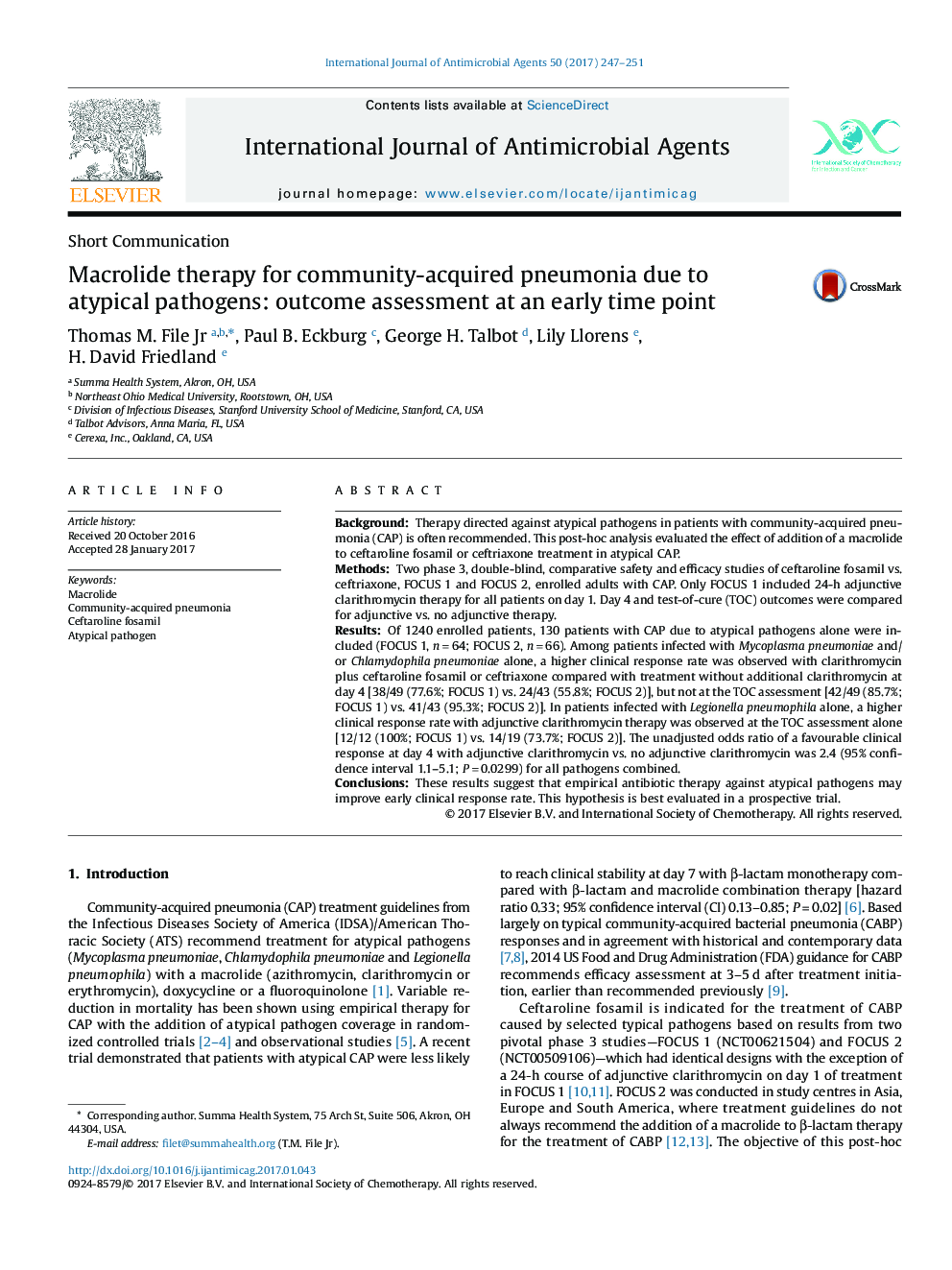| کد مقاله | کد نشریه | سال انتشار | مقاله انگلیسی | نسخه تمام متن |
|---|---|---|---|---|
| 5666949 | 1591738 | 2017 | 5 صفحه PDF | دانلود رایگان |
- The IDSA/ATS recommends therapy directed against atypical pathogens in patients with community-acquired pneumonia (CAP).
- Post-hoc analysis evaluated the effect of macrolide plus cephalosporin treatment in patients with CAP.
- Empirical CAP atypical pathogen therapy may improve early clinical response rate.
- This hypothesis is best evaluated in a prospective trial.
BackgroundTherapy directed against atypical pathogens in patients with community-acquired pneumonia (CAP) is often recommended. This post-hoc analysis evaluated the effect of addition of a macrolide to ceftaroline fosamil or ceftriaxone treatment in atypical CAP.MethodsTwo phase 3, double-blind, comparative safety and efficacy studies of ceftaroline fosamil vs. ceftriaxone, FOCUS 1 and FOCUS 2, enrolled adults with CAP. Only FOCUS 1 included 24-h adjunctive clarithromycin therapy for all patients on day 1. Day 4 and test-of-cure (TOC) outcomes were compared for adjunctive vs. no adjunctive therapy.ResultsOf 1240 enrolled patients, 130 patients with CAP due to atypical pathogens alone were included (FOCUS 1, nâ=â64; FOCUS 2, nâ=â66). Among patients infected with Mycoplasma pneumoniae and/or Chlamydophila pneumoniae alone, a higher clinical response rate was observed with clarithromycin plus ceftaroline fosamil or ceftriaxone compared with treatment without additional clarithromycin at day 4 [38/49 (77.6%; FOCUS 1) vs. 24/43 (55.8%; FOCUS 2)], but not at the TOC assessment [42/49 (85.7%; FOCUS 1) vs. 41/43 (95.3%; FOCUS 2)]. In patients infected with Legionella pneumophila alone, a higher clinical response rate with adjunctive clarithromycin therapy was observed at the TOC assessment alone [12/12 (100%; FOCUS 1) vs. 14/19 (73.7%; FOCUS 2)]. The unadjusted odds ratio of a favourable clinical response at day 4 with adjunctive clarithromycin vs. no adjunctive clarithromycin was 2.4 (95% confidence interval 1.1-5.1; Pâ=â0.0299) for all pathogens combined.ConclusionsThese results suggest that empirical antibiotic therapy against atypical pathogens may improve early clinical response rate. This hypothesis is best evaluated in a prospective trial.
Journal: International Journal of Antimicrobial Agents - Volume 50, Issue 2, August 2017, Pages 247-251
